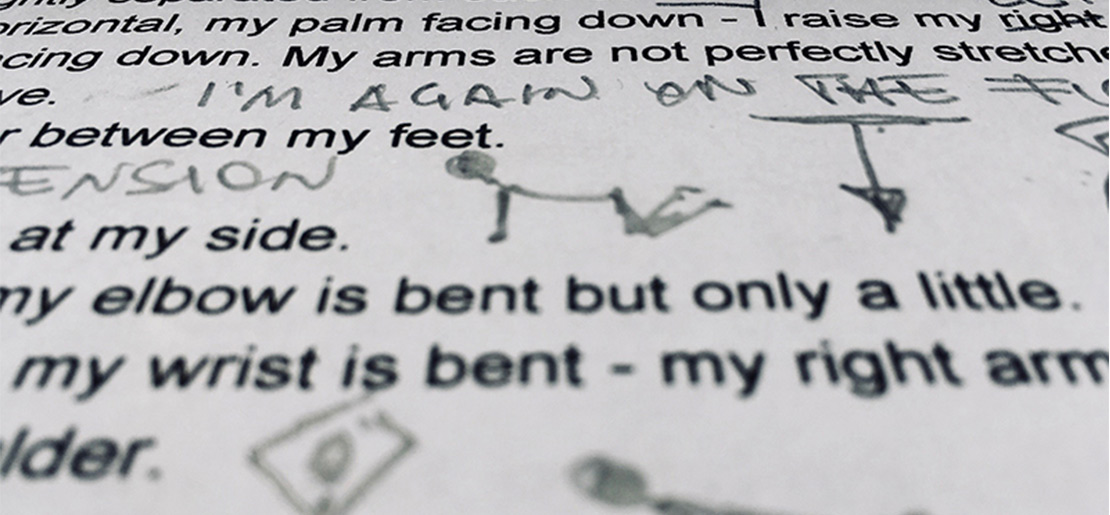photos Katjuscia Fantini
Credits
concept Paola Bianchi
artists: Fabrizio Modonese Palumbo, Paolo Pollo Rodighiero, Nicola Amato, Marta Bichisao, Stefano Murgia, Paola Bianchi, ten young dancers and about 450 other people
science advisory board Laura Gemini, Giovanni Boccia Artieri, Annapaola Lovisolo, Alessandro Pontremoli
tutor Roberta Nicolai, Raimondo Guarino
outside perspective Ivan Fantini
artistic residencies L’arboreto - Teatro Dimora di Mondaino | La Corte Ospitale ::: Centro di Residenza della Regione Emilia-Romagna; Centro di Residenza della Toscana (Armunia Rosignano - CapoTrave/Kilowatt Sansepolcro); Teatro Felix Guattari | Masque Teatro; CID Centro Internazionale della Danza di Rovereto; Santarcangelo Festival; Teatro G. Villa, San Clemente – Città Teatro; Lavanderia a Vapore
project realised with the contribution of ResiDance XL – an action of Rete Anticorpi XL - Network Giovane Danza D’autore, coordinated by L’arboreto - Teatro Dimora di Mondaino
production PinDoc
a coproduction Agar, Teatri di Vetro, Teatro Akropolis
with the support of L’arboreto - Teatro Dimora | La Corte Ospitale - Centro di Residenza Emilia Romagna
with the contribution of MiC and Regione Sicilia
In 2019 the ELP project is winner of the Call for Choreographic Residencies Lavanderia a Vapore.
In 2020 it is winner of the Rete Critica 9 and ¾ Award.
Memory is an experience of the body. The body is the place of images.
Hans Belting
WESTERN MEMORIES is a retinal-mnemonic archive born from the involvement of 40 people born and living in Italy. Paola Bianchi asked them which public, rather than personal, images were imprinted on their retinas and which, even after a long time, continue to live on in their visual memory. Symbolic images that underline a change in the course of History, iconic images that are fixed in the personal memory precisely because of their collective value.
The archive of images was then embodied by Paola, generating the dance solo ENERGHEIA, the first device of the ELP project. The artist's body became itself an archive and repository of bodily images in a process of organic re-actualisation of History.
ENERGHEIA was then dissected; the postures of which it is composed were described verbally and recorded verbally; the audio files formed an archive of postures.
During the creation of a performance with other interpreters, as well as during the workshops, the audio descriptions of the postures were proposed for listening. Through sequences of exercises, each participant explores the resonance of his or her own body, first for each individual posture and then in the construction of a score, a personal dance. The method "eliminates" the choreographer's body as a model to be imitated, implementing the generative force of the word in the resonance in each individual body; it opens the group of participants to the consonance, a transversal and horizontal listening; it removes dance from any possible aesthetic judgement, but re-establishes its value as a bodily and expressive practice of every human being; It makes possible the spontaneous emergence of cultural imagery within the interpretation that each body makes of the same verbal indication. It realises scenic performances of great strength and beauty in which the individual body carries traces of both collective history and personal stories.
The democratisation of this method of transmission allows anybody to embody that movement by taking it on individually, free from the dissatisfaction of a result fixed in advance. During some residencies Paola experimented with this methodology, which has now become a real method, with heterogeneous groups of people: young dancers, non-professionals of various ages (adults, high school and university students), the physically and mentally disabled, dance therapists, people with Parkinson's disease, blind and low vision people.
What is born each time from the embodiment of the descriptions is something that constantly amazes for the activation of a personal imaginary that springs from the assumption of postures common to all. Imagination is the action of the image, an action that destructures the image itself to recompose it in another body.
The "elimination" of the choreographer's body as a model to be imitated and the activation of a personal body modality aim at the research of being in the scene as opposed to doing on the scene.
ELP | WESTERN MEMORIES develops in pieces, modular modules:
ENERGHEIA - anatomical solo
EKPHRASIS - choreography with 10 young dancers
ESTI - non-professionals dancers
ESTI | blind and low vision people
POSTURE ARCHIVES - video
Ethos as a "way of being", the "how".
Logos, from the Indo-European root leg, meaning "to pick up", meant here both as word and listening.
Pathos, the emotional power.
These three bodiless entities are the aesthetics (through senses) of a project focused on the body as absolute protagonist even in its own absence.
ELP is an articulated research project linked to an in-depth investigation of the body, the relationships between bodies and the cultural imaginaries of which bodies are repositories.
ELP investigates the relationship between the descriptive word and dance through the audio transmission of archives of postures created from images. The descriptive word here means a word that only describes postures and movements without describing emotions. Precisely because of the precision of the description of movement and the absence of emotion, this same word can and 'must' in turn create emotion.
The project has so far seen the contribution and participation in its realisation of approximately 450 people, including professionals, children, citizens, blind people, people with Parkinson's disease, students, migrants and refugees; it has been supported by the main organisations involved in contemporary dance and has so far seen the realisation of several shows and performances.
How to create a choreography without a body to be imbibed by the body of the listener? What does the verbal description of a choreographic piece trigger into the body of the listener? And what moves would it generate when embodied?
These were the first questions that started the research in 2018.
I discern between "imbibe" (introject, subsume) and "embody" (becoming it, turn it into flesh) the first being an imaginative process which doesn't call for an actual movement in the body of the listener whereas the other is the physical action of performing.
What I've learned from my experiences so far is that even the utmost accurate and detailed description of a posture or a movement is always interpreted in a very subjective and individual way, both whenever imbibed and embodied.
The act of listening to the description of a movement can lead to envision your own body moving via a sort of muscular imagination (I become the body that is being depicted, thanks to my imagination its movements become my movements).
The process of embodying the description of a movement gives birth to a unique interpretation according to the single listening skills as well as to the specifics and potentials of the body of the subject and triggers the individual creativity to research the characteristics of the movement without having a physical template to emulate. By removing the body of the choreographer, the model, every single body develops its own system.
I am standing - my legs are slightly separated from each other, my feet parallel – my left leg is stretched out, my right leg is slightly bent – my left arm is bent to my side with the elbow down, my wrist is flexed, my hand is relaxed – my right hand is resting on my left hand, my right shoulder is slightly raised – my head is turned to the right.
This simple posture is interpreted in as many ways as the people who embody it but the extreme similarities of the various postures denote an interesting continuity between the transmission/enaction of the individual experiences of the bodies at play; a scheme that by removing the "choreographer body" as a template to be replicated paradoxically reinforce its influence and disclose the inherent meaning of the movement.
In order to examine the topic from different perspectives the project ELP will benefit from the scientific contributions by communication sociologists Laura Gemini and Giovanni Boccia Artieri, psychologist Annapaola Lovisolo and dance historian Alessandro Pontremoli.


